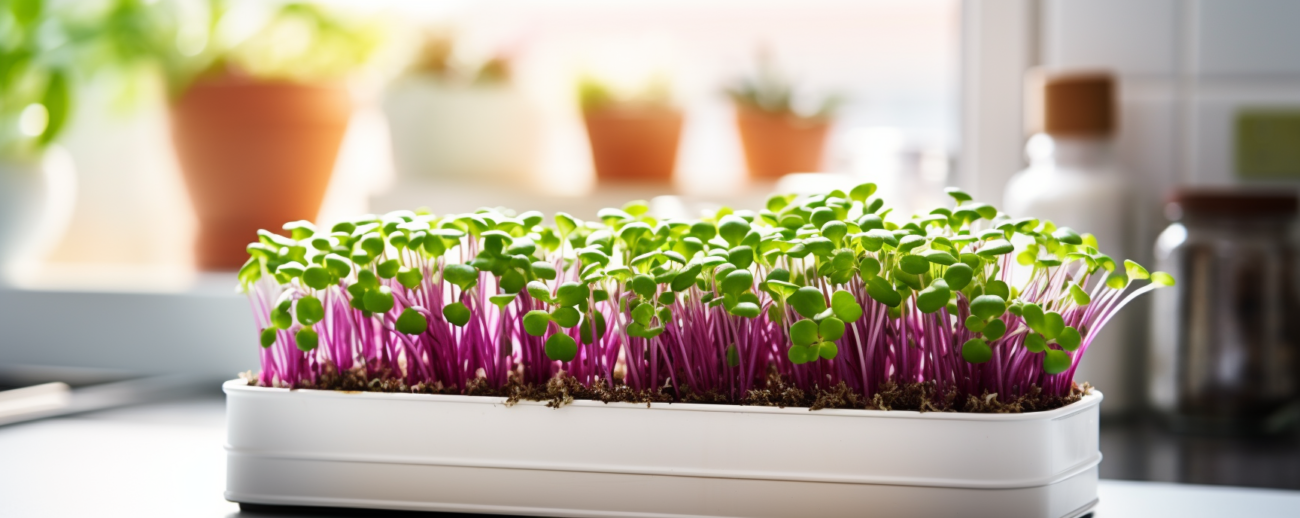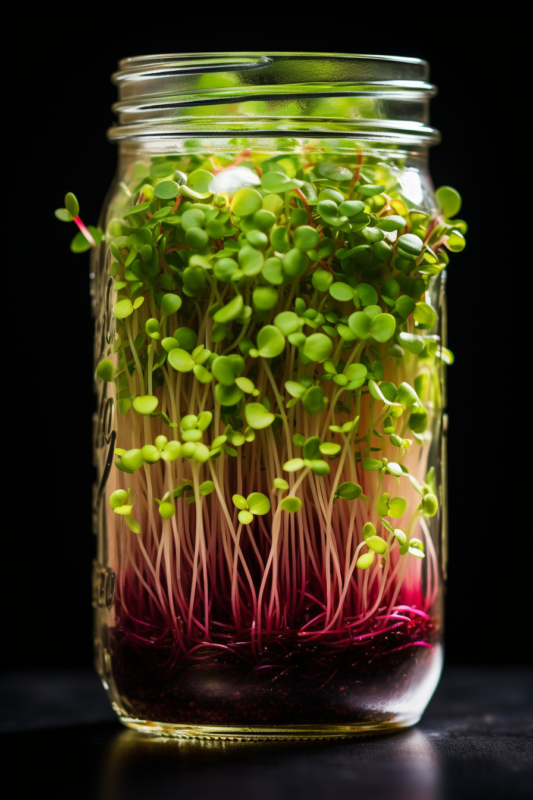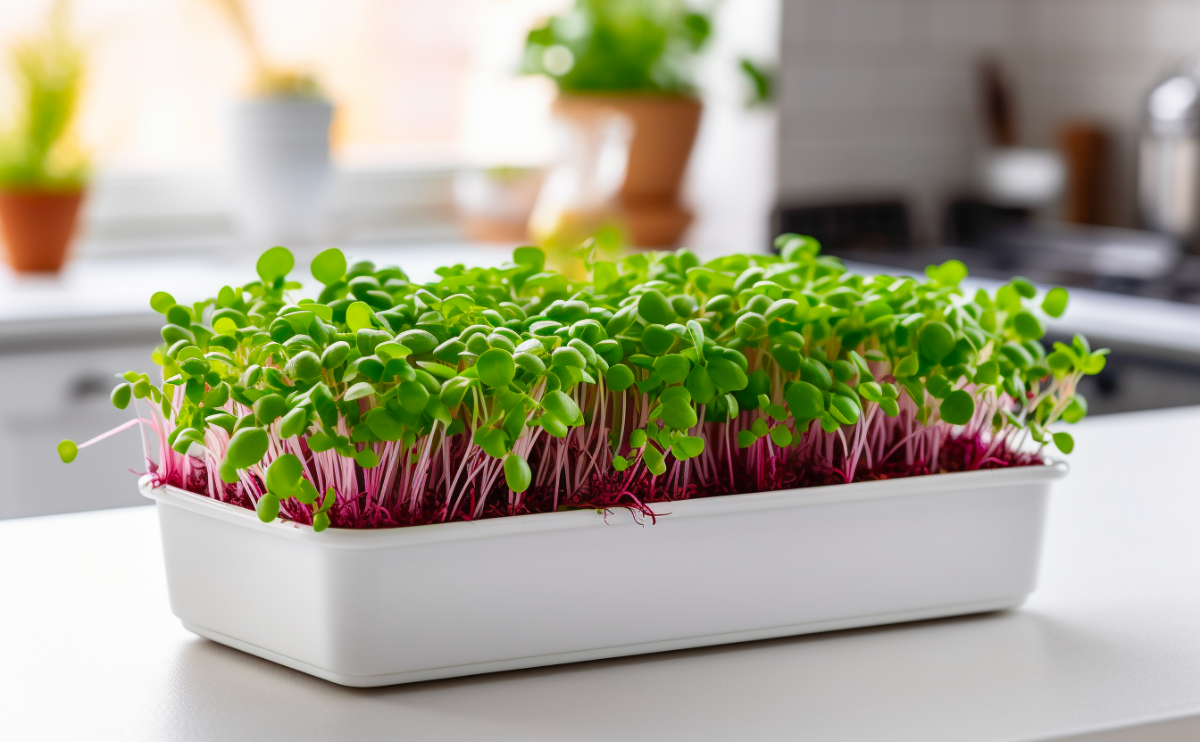Are you ready to embark on a green journey that is not only delicious but also incredibly rewarding? Look no further than growing your own radish microgreens! These vibrant and spicy greens are not only a feast for the taste buds but also a feast for the eyes. In this exciting guide, we will take you through the easy steps to grow radish microgreens, turning your gardening experience into a spicy and nutritious adventure!
Supplies to Gather:
To kickstart your radish microgreen adventure, gather the following supplies:
- Radish microgreen seeds: Choose high-quality radish seeds specifically meant for growing microgreens. Look for varieties with a spicy kick and fast growth. You can find these seeds at local nurseries, gardening centers, or reputable online seed suppliers.
- Growing mat or tray: Select a growing mat or tray designed for microgreen cultivation. These mats provide an ideal environment for seed germination and root development. Alternatively, you can use shallow trays or containers with drainage holes.
- Container for growing: Choose a container that suits your space and preferences. It should be clean, sturdy, and able to hold the growing medium and seeds securely. Consider repurposing items to reduce waste and environmental impact.
- Water source: Ensure you have access to a water source for soaking the seeds, misting the microgreens, and providing regular hydration throughout the growing process. Filtered or dechlorinated water is preferred to avoid any harmful chemicals.
- Spray bottle for misting: A spray bottle with a fine misting nozzle is essential for misting the microgreens and maintaining moisture levels. This helps prevent damage to the delicate seedlings during watering.
- Scissors or sharp knife for harvesting: When it’s time to harvest your radish microgreens, you’ll need a clean and sharp tool for precision cutting. Scissors or a sharp knife work well to ensure clean cuts and easy harvesting.
Preparation to Plant Radish Microgreens:
Before you start planting your radish microgreen seeds, make sure to prepare the growing area:
- Clean and sanitize: Thoroughly clean the container, growing mat or tray, and any gardening tools you’ll be using. Sanitization helps prevent the growth of harmful bacteria or fungi that could affect the microgreens.
- Prepare the growing mat or tray: If you’re using a growing mat, ensure it fits snugly inside the container and covers the entire surface area. If using a tray, fill it with a suitable growing medium like peat moss, coconut coir, or soilless seed-starting mix. Moisten the growing medium with water, ensuring it’s evenly damp but not soaked.
Step-by-Step Guide to Growing Radish Microgreens
Follow these simple steps to cultivate vibrant and healthy radish microgreens:
Step 1: Soak the Seeds – Dive into the Marvels of Germination
Start your microgreen adventure by giving your radish seeds a refreshing soak for 8-12 hours. This step helps the seeds awaken and prepare for their journey towards becoming spicy microgreens.
Step 2: Prepare the Growing Container – Set the Stage for Success
Prepare the stage for your radish microgreens’ growth! Place the growing mat or fill the tray with a moistened growing medium. Ensure the surface is even and smooth for easy seed sowing.
Step 3: Sow the Seeds – Planting the Spicy Magic
Sprinkle the soaked radish seeds evenly across the growing medium. Imagine planting tiny seeds of spicy magic that will soon transform into vibrant greens. Ensure the seeds are spread uniformly to allow for optimal growth and avoid overcrowding.
Step 4: Light and Water – Nourishing the Growth
Position the container in a well-lit area with access to indirect sunlight. Alternatively, you can use grow lights to provide adequate illumination. Water the seeds gently using a spray bottle, ensuring the growing medium remains moist throughout the germination process.
Step 5: Observe and Wait – Anticipation of Spicy Greens
Now comes the exciting part – waiting for the magic to happen! Keep a close eye on your radish microgreens as they germinate and grow. Within a few days, you’ll see tiny green shoots emerging from the soil, eagerly reaching for the light.
Step 6: Harvest and Spice Up – A Feast for the Senses
Once your radish microgreens have reached a height of 1-2 inches and developed their true leaves, they are ready to be harvested. Embrace the spicy feast for your senses as you snip the microgreens just above the soil line using scissors or a sharp knife.
Step 7: Enjoy the Spicy Bounty – A Zesty Addition
Now, it’s time to enjoy the zesty bounty of your homegrown radish microgreens. These spicy greens are a perfect addition to salads, sandwiches, tacos, and more. Their bold flavor and vibrant color will elevate any dish, adding a touch of excitement to your culinary creations!
Pro Tip: Create a microgreen recipe collection to keep track of your favorite dishes and experiment with new flavor combinations.

Extra Delights: Utilizing the Growing Mat and Seedlings
Don’t let the journey end with the harvest! There’s more to explore:
- Reusing the Growing Mat: After harvesting, remove the remaining roots and any dried-up parts from the growing mat. Compost it or use it as an excellent addition to your garden soil to nourish future plants.
- Seedlings as Tasty Treats: If any seedlings have grown too close together, thin them out and use them in your culinary creations. It’s a bonus treat while you wait for the rest of the microgreens to mature.
Other Ways to Grow Radish Microgreens
While the steps mentioned above outline the traditional method of growing microgreens, there are other creative approaches you can explore:
- Jar Sprouting: Place the soaked seeds in a jar with a sprouting lid or a piece of breathable fabric secured with a rubber band. Rinse and drain the seeds twice a day until they sprout. Once sprouted, transfer them to a tray or container with a growing medium to continue the growth process.
- Hydroponic Growing: Utilize a hydroponic system to grow your microgreens without soil. Set up a hydroponic tray with a nutrient-rich water solution and place your seeds on a growing medium like a coconut coir pad or a specialized hydroponic mat. Ensure the roots have access to the nutrient solution for healthy growth.
- Vertical Growing: Maximize your space by growing microgreens vertically. Install a vertical growing system or use shelves with grow lights to provide adequate light for the microgreens. This method allows you to grow a larger quantity of microgreens in a compact area.
Remember, each method may require specific equipment and adjustments to watering and lighting

Detailed Guides for Planting Vegetables, Herbs, Greens & Lettuce, Peppers, and Wildflowers:
At FarmerValley we offer detailed guides for planting vegetables, herbs, greens & lettuce, peppers, and wildflowers. These guides provide step-by-step instructions for planting and caring for your plants, as well as tips for getting the best results. Check our growing guides and plant your own non-GMO garden with confidence.
Planting non-GMO seeds is a great way to enjoy fresh and healthy vegetables and herbs while also knowing that you’re avoiding harmful additives. With these essential tips and top lists, as well as our detailed guides, you’ll be on your way to a bountiful harvest in no time.

